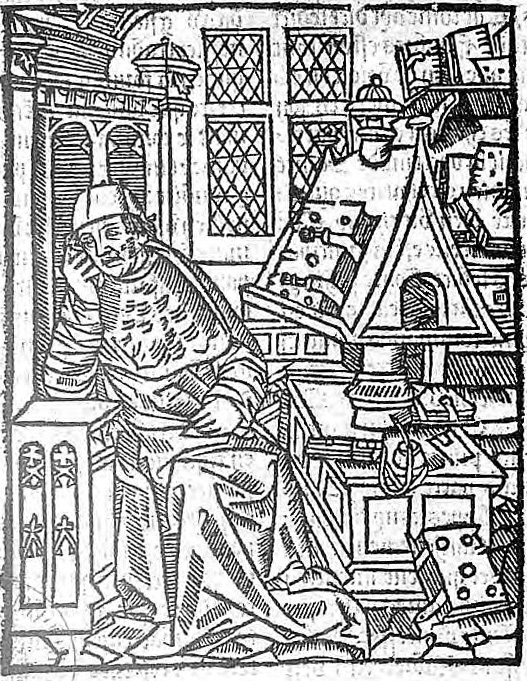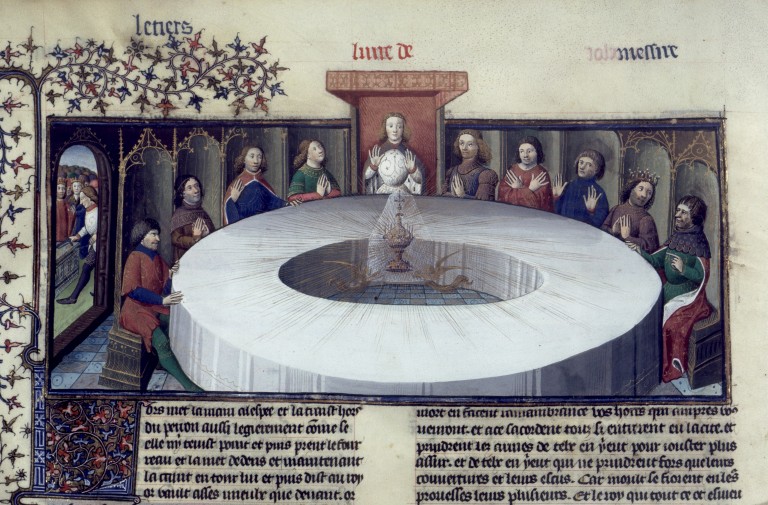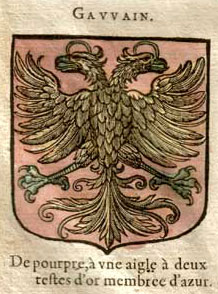|
Yvain And Gawain
''Ywain and Gawain'' is an early-14th century Middle English Arthurian verse romance based quite closely upon the late-12th-century Old French romance '' The Knight of the Lion'' by Chrétien de Troyes. Plot Ywain, one of King Arthur's Knights of the Round Table, while at Arthur's court hears from Sir Colgrevance about an encounter he had with a knight, who defeated him in a fight. Ywain sets out, kills the knight and marries the knight's widow Alundyne with the aid of her serving-lady Lunet (or Lunette), moving into the castle of Alundyne's late husband. However, when Arthur and his men visit them, Gawain encourages Ywain to go off adventuring, leaving his wife behind. During their adventures the two are separated, then find themselves fighting each other but recognise each other and are reunited. Ywain returns to his wife Alundyne and with Lunet's help they are reconciled. Manuscripts The story of ''Ywain and Gawain'' is found in a single manuscript dating to the 15th century ... [...More Info...] [...Related Items...] OR: [Wikipedia] [Google] [Baidu] |
Middle English
Middle English (abbreviated to ME) is a form of the English language that was spoken after the Norman conquest of 1066, until the late 15th century. The English language underwent distinct variations and developments following the Old English period. Scholarly opinion varies, but the ''Oxford English Dictionary'' specifies the period when Middle English was spoken as being from 1150 to 1500. This stage of the development of the English language roughly followed the High to the Late Middle Ages. Middle English saw significant changes to its vocabulary, grammar, pronunciation, and orthography. Writing conventions during the Middle English period varied widely. Examples of writing from this period that have survived show extensive regional variation. The more standardized Old English language became fragmented, localized, and was, for the most part, being improvised. By the end of the period (about 1470) and aided by the invention of the printing press by Johannes Gutenberg in 14 ... [...More Info...] [...Related Items...] OR: [Wikipedia] [Google] [Baidu] |
Old French
Old French (, , ; Modern French: ) was the language spoken in most of the northern half of France from approximately the 8th to the 14th centuries. Rather than a unified language, Old French was a linkage of Romance dialects, mutually intelligible yet diverse, spoken in the northern half of France. These dialects came to be collectively known as the , contrasting with the in the south of France. The mid-14th century witnessed the emergence of Middle French, the language of the French Renaissance in the Île de France region; this dialect was a predecessor to Modern French. Other dialects of Old French evolved themselves into modern forms (Poitevin-Saintongeais, Gallo, Norman, Picard, Walloon, etc.), each with its own linguistic features and history. The region where Old French was spoken natively roughly extended to the northern half of the Kingdom of France and its vassals (including parts of the Angevin Empire, which during the 12th century remained under Anglo-Norman rul ... [...More Info...] [...Related Items...] OR: [Wikipedia] [Google] [Baidu] |
Yvain, The Knight Of The Lion
, original_title_lang = fro , translator = , written = between 1178 and 1181 , country = , language = Old French , subject = Arthurian legend , genre = Chivalric romance , form = , meter = Octosyllable , rhyme = Rhyming couplets , lines = 6,818 , oclc = , wikisource = Yvain, the Knight of the Lion , orig_lang_code = fr , native_wikisource = Yvain ou le Chevalier au Lion ''Yvain, the Knight of the Lion'' (french: Yvain ou le Chevalier au Lion) is an Arthurian romance by French poet Chrétien de Troyes. It was written c. 1180 simultaneously with ''Lancelot, the Knight of the Cart'', and includes several references to the narrative of that poem. It is a story of knight-errantry, in which the protagonist Yvain is first rejected by his lady for breaking a very important promise, and subsequently performs a number of heroic d ... [...More Info...] [...Related Items...] OR: [Wikipedia] [Google] [Baidu] |
Chrétien De Troyes
Chrétien de Troyes (Modern ; fro, Crestien de Troies ; 1160–1191) was a French poet and trouvère known for his writing on Arthurian subjects, and for first writing of Lancelot, Percival and the Holy Grail. Chrétien's works, including ''Erec and Enide'', ''Lancelot'', ''Perceval'' and ''Yvain'', represent some of the best-regarded of medieval literature. His use of structure, particularly in ''Yvain'', has been seen as a step towards the modern novel. Life Little is known of his life, but he seems to have been from Troyes or at least intimately connected with it. Between 1160 and 1172 he served (perhaps as herald-at-arms, as Gaston Paris speculated) at the court of his patroness Marie of France, Countess of Champagne, daughter of King Louis VII and Eleanor of Aquitaine, who married Count Henry I of Champagne in 1164. Later, he served the court of Philippe d'Alsace, Count of Flanders. Works Chrétien's works include five major poems in rhyming eight-syllable couplets. Fo ... [...More Info...] [...Related Items...] OR: [Wikipedia] [Google] [Baidu] |
Ywain
Sir Ywain , also known as Yvain and Owain among other spellings (''Ewaine'', ''Ivain'', ''Ivan'', ''Iwain'', ''Iwein'', ''Uwain'', ''Uwaine'', etc.), is a Knight of the Round Table in Arthurian legend, wherein he is often the son of King Urien of Gorre and the sorceress Morgan le Fay. The historical Owain mab Urien, on whom the literary character is based, was the king of Rheged in Great Britain during the late 6th century. Yvain was one of the earliest characters associated with King Arthur. He was also one of the most popular, starring in Chrétien de Troyes' late-12th-century ''Yvain, the Knight of the Lion'' and appearing prominently in many later accounts, often accompanied by his fierce pet lion. He remains Urien's son in virtually all literature in which he appears, whereas other characters in Arthurian legend based on historical figures usually lost their original familial connections in romance literature. Welsh tradition Ywain (Yvain) takes his name from Owain mab ... [...More Info...] [...Related Items...] OR: [Wikipedia] [Google] [Baidu] |
King Arthur
King Arthur ( cy, Brenin Arthur, kw, Arthur Gernow, br, Roue Arzhur) is a legendary king of Britain, and a central figure in the medieval literary tradition known as the Matter of Britain. In the earliest traditions, Arthur appears as a leader of the post-Roman Britons in battles against Saxon invaders of Britain in the late 5th and early 6th centuries. He appears in two early medieval historical sources, the ''Annales Cambriae'' and the ''Historia Brittonum'', but these date to 300 years after he is supposed to have lived, and most historians who study the period do not consider him a historical figure.Tom Shippey, "So Much Smoke", ''review'' of , ''London Review of Books'', 40:24:23 (20 December 2018) His name also occurs in early Welsh poetic sources such as ''Y Gododdin''. The character developed through Welsh mythology, appearing either as a great warrior defending Britain from human and supernatural enemies or as a magical figure of folklore, sometimes associated wi ... [...More Info...] [...Related Items...] OR: [Wikipedia] [Google] [Baidu] |
Round Table
The Round Table ( cy, y Ford Gron; kw, an Moos Krenn; br, an Daol Grenn; la, Mensa Rotunda) is King Arthur's famed table in the Arthurian legend, around which he and his knights congregate. As its name suggests, it has no head, implying that everyone who sits there has equal status, unlike conventional rectangular tables where participants order themselves according to rank. The table was first described in 1155 by Wace, who relied on previous depictions of Arthur's fabulous retinue. The symbolism of the Round Table developed over time; by the close of the 12th century it had come to represent the chivalric order associated with Arthur's court, the Knights of the Round Table. Origins Though the Round Table is not mentioned in the earliest accounts, tales of King Arthur having a marvellous court made up of many prominent warriors are ancient. Geoffrey of Monmouth, in his ''Historia Regum Britanniae'' (composed c. 1136) says that, after establishing peace throughout Britain, Arth ... [...More Info...] [...Related Items...] OR: [Wikipedia] [Google] [Baidu] |
Colgrevance
The Knights of the Round Table ( cy, Marchogion y Ford Gron, kw, Marghekyon an Moos Krenn, br, Marc'hegien an Daol Grenn) are the knights of the fellowship of King Arthur in the literary cycle of the Matter of Britain. First appearing in literature in the mid-12th century, the Knights are an order dedicated to ensuring the peace of Arthur's kingdom following an early warring period, entrusted in later years to undergo a mystical quest for the Holy Grail. The Round Table at which they meet is a symbol of the equality of its members, who range from sovereign royals to minor nobles. The various stories in the cycle present an assortment of knights from all over Great Britain and abroad, some of whom are even from outside of Europe. Their ranks often include King Arthur's family, Arthur's close and distant relatives, such as Agravain and Gaheris, as well as his reconciled enemies and those he defeated in battle, including Galehaut and King Lot, Lot. Several of the most notable kn ... [...More Info...] [...Related Items...] OR: [Wikipedia] [Google] [Baidu] |
Gawain
Gawain (), also known in many other forms and spellings, is a character in Arthurian legend, in which he is King Arthur's nephew and a Knight of the Round Table. The prototype of Gawain is mentioned under the name Gwalchmei in the earliest Welsh sources. He has subsequently appeared in many Arthurian stories in Welsh, Latin, French, English, Scottish, Dutch, German, Spanish, and Italian, notably as the protagonist of the famous Middle English poem ''Sir Gawain and the Green Knight''. Other tales featuring Gawain as the central character include '' De Ortu Waluuanii'', ''Diu Crône'', '' Ywain and Gawain'', '' Golagros and Gawane'', '' Sir Gawain and the Carle of Carlisle'', '' L'âtre périlleux'', '' La Mule sans frein'', '' La Vengeance Raguidel'', '' Le Chevalier à l'épée'', '' The Awntyrs off Arthure'', '' The Greene Knight'', and '' The Weddynge of Syr Gawen and Dame Ragnell''. In Arthurian chivalric romance literature, Gawain is usually depicted as King Arthur's clo ... [...More Info...] [...Related Items...] OR: [Wikipedia] [Google] [Baidu] |
British Library
The British Library is the national library of the United Kingdom and is one of the largest libraries in the world. It is estimated to contain between 170 and 200 million items from many countries. As a legal deposit library, the British Library receives copies of all books produced in the United Kingdom and Ireland, including a significant proportion of overseas titles distributed in the UK. The Library is a non-departmental public body sponsored by the Department for Digital, Culture, Media and Sport. The British Library is a major research library, with items in many languages and in many formats, both print and digital: books, manuscripts, journals, newspapers, magazines, sound and music recordings, videos, play-scripts, patents, databases, maps, stamps, prints, drawings. The Library's collections include around 14 million books, along with substantial holdings of manuscripts and items dating as far back as 2000 BC. The library maintains a programme for content acquis ... [...More Info...] [...Related Items...] OR: [Wikipedia] [Google] [Baidu] |
14th-century Poems
As a means of recording the passage of time, the 14th century was a century lasting from 1 January 1301 ( MCCCI), to 31 December 1400 ( MCD). It is estimated that the century witnessed the death of more than 45 million lives from political and natural disasters in both Europe and the Mongol Empire. West Africa experienced economic growth and prosperity. In Europe, the Black Death claimed 25 million lives wiping out one third of the European population while the Kingdom of England and the Kingdom of France fought in the protracted Hundred Years' War after the death of Charles IV, King of France led to a claim to the French throne by Edward III, King of England. This period is considered the height of chivalry and marks the beginning of strong separate identities for both England and France as well as the foundation of the Italian Renaissance and Ottoman Empire. In Asia, Tamerlane (Timur), established the Timurid Empire, history's third largest empire to have been ever establish ... [...More Info...] [...Related Items...] OR: [Wikipedia] [Google] [Baidu] |
Poetry Based On Works By Chrétien De Troyes
Poetry (derived from the Greek ''poiesis'', "making"), also called verse, is a form of literature that uses aesthetic and often rhythmic qualities of language − such as phonaesthetics, sound symbolism, and metre − to evoke meanings in addition to, or in place of, a prosaic ostensible meaning. A poem is a literary composition, written by a poet, using this principle. Poetry has a long and varied history, evolving differentially across the globe. It dates back at least to prehistoric times with hunting poetry in Africa and to panegyric and elegiac court poetry of the empires of the Nile, Niger, and Volta River valleys. Some of the earliest written poetry in Africa occurs among the Pyramid Texts written during the 25th century BCE. The earliest surviving Western Asian epic poetry, the ''Epic of Gilgamesh'', was written in Sumerian. Early poems in the Eurasian continent evolved from folk songs such as the Chinese ''Shijing'', as well as religious hymns (the Sanskrit ''R ... [...More Info...] [...Related Items...] OR: [Wikipedia] [Google] [Baidu] |

_Owain.jpg)







.jpg)